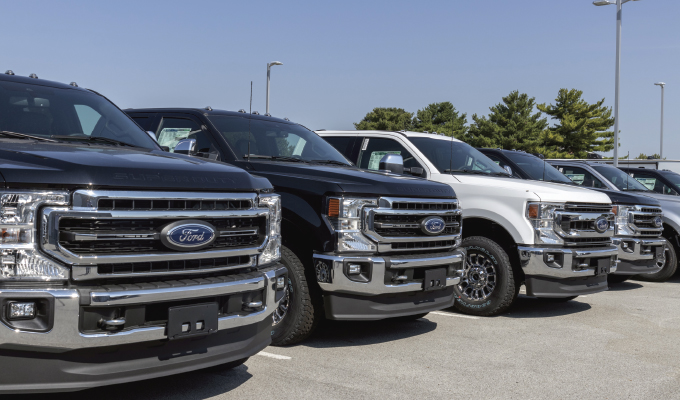Over the last four years, the commercial truck industry has experienced an unexpected evolution, leading to a significant transformation in how dealers and buyers engage. This shift, coupled with various challenges in the economy, sets the stage for another year of adaptation within the commercial truck industry.
The notable expansion of inventory on dealer lots aligns with a deceleration in demand for specific categories of commercial vehicles, reflecting a broader post-pandemic slowdown across various segments. Manufacturers are now intensifying their scrutiny of vehicle allocations to dealers, expressing collective concerns about the accumulation of unsold vehicles. This softening demand is also placing downward pressure on used truck prices.
The trends shaping the commercial truck industry in 2024 are influenced by a combination of factors, including buyer demand, economic conditions, technological adoption, and industry-specific challenges. The industry is currently undergoing a course correction related to inventory and pricing, which may pose additional challenges for dealers navigating ever-shifting residual values.
Stakeholders in the industry are expected to focus on adjustments in marketing, sales strategies, personnel training, and inventory management in the coming year. Notably, buyers are increasingly conducting nearly all their vehicle research online before reaching out to specific dealers. This underscores the importance of dealers establishing a robust online presence to capture most prospective buyers, and this trend is expected to persist in the upcoming year.
The supply of medium-duty trucks on dealer lots has grown by nearly 25 percent compared to the same period last year. This emerging trend necessitates commercial dealerships adopt a more proactive sales approach, including enhanced online merchandising, broader outreach to potential buyers, and the development of close relationships with small businesses. A back-to-basics sales strategy will be essential to drive sales, with successful dealerships incorporating ongoing training for sales, service, and finance teams.

In the heavy-duty segment, softening freight activity and challenging contract and spot rates are significantly impacting fleet expansions. This has, in turn, led to an increase in depreciation. While there are expectations of stabilization in declining prices for used Class 8 by the end of the year, there isn’t anticipated growth in the availability of new Class 8 units on dealer lots, as the majority are pre-sold.
The pursuit of buyers for commercial electric vehicles (EVs) continues to be a challenge for manufacturers and dealers. The early adopters seem to have already embraced these vehicles, and significant marketing efforts will be required to boost the rate of sales growth, particularly for small businesses. Observations by industry experts suggest a potential slowdown in the adoption of commercial EVs compared to previous forecasts. This may be influenced by factors such as infrastructure challenges, cost considerations, and a potential shift in market sentiment. Manufacturers might shift their marketing approach, presenting commercial EVs as just another fuel type, rather than highlighting them as the next generation of commercial vehicles.
The rise in the days’ supply of commercial trucks on dealer lots might be indicative of cooling buyer demand. High interest rates, low freight rates, and economic challenges contribute to a more cautious approach from potential buyers. Consequently, there is a substantial increase of 51 percent in vehicle listings on Commercial Truck Trader in 2024 compared to 2023. This suggests a robust increase in available inventory for buyers with the capacity to make purchases.
Additionally, the growth in the number of dealers on Commercial Truck Trader indicates an expanding market presence, which is essential for moving units and implies increased competition among dealers for the buyer pool. A notable increase in marketing spend per commercial vehicle across all channels is expected to drive sales in 2024.
There is a noticeable growth in the appetite for and consumption of data by original equipment manufacturers (OEMs) and dealers. Understanding market dynamics is crucial in developing strategies to capitalize on shifts in buyer behavior. Tools that enable dealers to view market demand by vehicle category, make, model, and price become invaluable when determining go-to-market strategies. For manufacturers, knowledge of demand in specific markets enables more efficient and effective production and allocation strategies.
The ongoing challenge within the industry to find and retain skilled technicians remains a major concern. This could have a considerable impact on fixed ops and absorption rates, as dealerships navigate the challenges associated with attracting technicians by offering competitive compensation.
As new challenges continue to emerge, they are becoming the new normal in the commercial truck space. Industry has the capability to navigate these challenges profitably. Successful dealerships will need to adopt a hands-on, day-to-day approach to their operations. This includes robust marketing efforts, utilizing data as a guide, and requiring ongoing training for the sales, service, and finance departments. A sophisticated strategy is critical to dealership success in 2024.
About the Author
Charles Bowles is the director of OEM & Strategic Initiatives for Trader Interactive where he works with the top executives at some of the world’s largest companies to build strategies to market their products. He was instrumental in the launch and growth of Commercial Truck Trader’s position in the industry.
He has presented at numerous commercial truck national events. He is a subject matter expert for the industry and has presented on digital best practices to countless companies and organizations, including Ford, Stellantis, Isuzu, the National Automotive Dealers Association, the National Truck Equipment Association, the Used Truck Association and the Brazilian Automotive Dealers Association.




